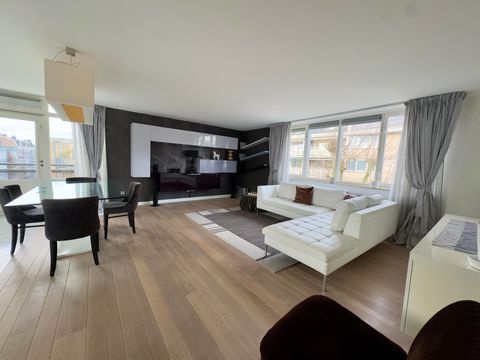2-2-2021 —
Are you renting out a small house (< approx. 60-65 m2) in the free sector? Then be aware, because the point system is probably going to change.
The Netherlands has been struggling with housing shortages since World War II. Currently there is a shortage of about 331,000 homes. And with all the rules and obstacles that government and municipalities come up with time and time again, the construction process is more likely to be thwarted than smoothly. In principle, this is good news for home investors. Because the more scarcity, the higher the rents are.
However, the Dutch government looks at these high rents with sorrow and is searching for a method to limit the rental prices. While by building much more than they do at this moment, they would hit 2 targets with 1 shot; the housing shortage is resolving and prices are falling. But as is now almost common, only the symptoms of the self-created problem are addressed here.
Social sector vs. free sector
Currently, the rental market is divided into the social sector (2021: basic rent < € 752.33) and the free sector (basic rent > € 752.33). The government wants to add a new sector to this; middle rent sector. That should be roughly anything between € 752.33 and € 1,040.00. But that is typical, especially in a city like Amsterdam where the free sector currently only starts at about € 1,250.00.
Point system
The point system, which determines whether your home belongs in the social sector or in the free sector, now roughly consists of 3 parts: the dimensions, the Energy label and the WOZ value. In addition, you can also receive points for, among other things, the finishing of the house. Due to the current high WOZ values, even the smallest apartments in large cities currently have enough points to rent out in the free sector. Only with a very small apartment in combination with a bad Energy label you are currently sometimes just a few points short to be able to rent out in the free sector.
Maximization of the WOZ points is on the way
Previously, the location of a home hardly counted for the scoring. For an equivalent home in a cheap location such as North-East Holland, the amount of the rent could be equal to a home in a very expensive location, such as the canal belt in Amsterdam. This was adjusted in 2018. From that moment on, the WOZ value started to count more in the scoring. And due to the current high WOZ values, rents in the large cities in particular rose considerably, so that almost every home could be rented out in the free sector.
Minister Ollongren now wants to set a cap on the WOZ points with regard to the point system. In November 2020, the minister published the draft decision to amend the home evaluation system (WWS), in which the number of WOZ points is capped at 33%.
What does this mean?
What does this mean if the proposal is introduced in this form? Depending on the Energy label and finish level, we estimate that the dimensions of a home must be at least 60-65 m2 in order to earn enough points to be able to rent out in the free sector. Although there are exceptions to this, for example if you have a small home with a very good energy rating and / or a luxurious finish.
The scoring consists of:
-the number of m2 of the (heated) rooms: 1 point per m2
-the other areas: 0.75 points per m2
-the presence of an outdoor space and the quality of the home / finish in kitchen and bathroom: from 0.25 to a few points
-national Monument: 50 points
-WOZ value: soon max. 33% of the total number of points
-renovation points: when a renovation is completed on or after October 1, 2016, you can award rental points based on the amount invested. A minimum amount of € 10,000 must be invested to be able to use the points. These points can be passed on from the year in which the renovation was carried out and during the 5 following calendar years.
-Energy label: a distinction is made between single-family houses and multi-family houses (= flats). If there is no definitive energy label, the year of construction of the house is assumed.
If you have a DEFINITIVE Energy label, you will receive the following points:
Energy label A ++: Single-family house 44 points | multi-family home 40 points
Energy label A + : Single-family house 40 points | multi-family house 36 points
Energy label A : Single-family house 36 points | multi-family home 32 points
Energy label B : Single-family house 32 points | multi-family house 28 points
Energy label C : Single-family house 22 points | multi-family home 15 points
Energy label D : Single-family house 14 points | multi-family house 11 points
Energy label E : Single-family house 8 points | multi-family house 5 points
Energy label F : Single-family house 4 points | multi-family house 1 point
Energy label G : Single-family house 0 points | multi-family home 0 points
If there is no Energy Label or Energy Index, the year of construction of the house is assumed:
2002 and later: Label A = Single-family house 36 points | Multi-family home 32 points
2000 to 2001 : Label B = Single-family home 32 points | Multi-family home 28 points
1998 to 1999 : Label C = Single-family house 22 points | Multi-family home 15 points
1992 to 1997 : Label C/D = Single-family house 22 points | Multi-family house 11 points
1984 to 1991 : Label D = Single-family home 14 points | Multi-family house 11 points
1979 to 1983 : Label E = Single-family house 8 points | Multi-family house 5 points
1977 to 1978 : Label F = Single-family house 4 points | Multi-family house 1 point
1976 or older : Label G = Single-family home 0 points | Multi-family home 0 points
A definitive energy label is mandatory for rental or sale!
Check if you have enough points
Are you wondering if you still have enough points to rent out in the free sector if this plan is implemented? Then do the point count here and then deduct the points for the WOZ value. Per July 2021 you must in total have at least 143 points to be able to rent out in the free sector. A maximum of 1/3 of this may consist of points for the WOZ value. If you (excluding the points for the WOZ value) have less than 96 points (is 2/3 of 143), your home may suddenly fall into the social sector. Which is strange anyway, because they want to add mid-rental properties. So why not a return to the mid-rental sector?
Are you missing a number of points?
The fastest way to get more points is to improve the Energy Label. For example, for an Energy label D you get 11 points, while for an Energy label C you get 15 points and for an Energy label B 28 points! If you are only a few points short, you can consider making the finish more luxurious by installing f.i. a mixer tap or bathroom furniture.
What is the risk of not having enough points?
If you rent out a house in the free sector that actually belongs in the social sector in terms of number of points, a tenant can go to the tenancy committee to have the rent assessed. If it appears that your home belongs in the social sector, the rent will be adjusted downwards. You must then repay the excess rent received. And from now on, the rent set by the tenancy committee will apply.
Do you have a rental contract for an indefinite period? Then there is a good chance that the tenant, because of the lack of affordable houses, will not leave in the coming years. Turning your investment into a bottomless pit.
Point system (WWS) is seriously outdated
The point system dates back to 1979 and was designed with as a starting point to obtain a reasonable return for the landlord. The rental of housing had to be profitable and the return had to at least equal the interest on government loans (then equal to about 8%). It is probably time to once again enshrine a still to be determined reasonable return as a lower limit and starting point in the rent legislation.
Since 1979, the situation in the housing market has changed completely, but we still use the point system from 1979. Although the WOZ value was introduced in 2015, nothing else has ever been adjusted. For example, there is no room to award points based on modern luxury features such as a heat-cooling system which costs a large investment, but you do get points if your kitchen countertop is longer than 2 meters or if the tiles in the bathroom are higher than 1.5 meters.....
All in all, the WWS is a pretty dated system that should be modernized as a matter of urgency. Or abolished altogether and simply link the rental price to the WOZ value of the property. Much simpler and clearer.
It is not yet final
Incidentally, this proposal is not yet final. Nevertheless, it is good to know that this is an issue. Before the cabinet resigned, it was expected that the effective date would be 1 October 2021. Now that the cabinet has resigned, it may be that the decision and thus the effective date will be delayed.
Update July 2021: the expected date of implementation is now January 2022.
Incidentally, this only applies to new lease agreements that take effect on or after the start date to be determined, so not to existing lease agreements.
Afbeelding van djedj via Pixabay






